This
post was originally published on
this siteOriginally Posted At: https://breakingmuscle.com/feed/rss
If you have ever wandered down the internet rabbit hole when searching for the best protein shakes, you are not alone. Step away from the search bar though, because this round-up features our top 11 best protein shakes.
These aren’t just any protein shakes. They were carefully selected for their formulation, cost, and unique features that fit several of life’s occasions. Protein shakes can be excellent supplements to help with weight loss, and they may decrease your risk of developing a chronic disease, improve muscle mass, and even support pregnancy. (1)(2)
We want to help support your health and wellness journey. Through rigorous research, our goal is to make sure that you are well informed to make the best decision for you. Are you ready to find a protein shake that will best fit your lifestyle? Check out our top picks below to dig deeper into how they may help elevate your health.
Medical disclaimer: This article is intended for educational and informational purposes only. It is not intended as a substitute for medical advice. For health advice, contact a licensed healthcare provider.
Our Top Picks for the Best Protein Shakes
Best Protein Shakes for Weight Loss: PhenQ Complete Meal Shake
PhenQ Complete Meal Shake
- Type of protein: Whey protein concentrate
- Cost per serving: $2.99
- Calories per serving: 180 to 190
- Protein per serving: 16 to 17 grams
- Flavors: Chocolate, Strawberry & Cream, Vanilla
Check Now
Pros
- Digestive enzyme complex added to aid in digestion and absorption
- Made with zero added sugars
- Contains 13 vitamins per scoop
Cons
- Manufactured with xanthan gum and sucralose
There is no magic wand for weight loss. However, the PhenQ Complete Meal Shake may be the missing link in your fitness routine to put your weight loss goals into action. This vegetarian-friendly supplement uses mostly natural ingredients, including gluten-free oat flour, whey protein concentrate, and flaxseed. PhenQ is honest about its development process and reports that it has gone through 32 renditions of this shake to achieve the perfect combination of taste, texture, and nutrition.
PhenQ recommends replacing only one of your daily meals with this shake. It is important not to rely solely on dietary supplements for nutrition. Following a healthy diet composed of whole foods and macronutrient recommendations specific to you will be the best way to nourish your body. The PhenQ Complete Meal Shake is meant to supplement your intake of healthy, whole food sources.
Unlike many other protein supplements, it contains a digestive enzyme complex and Carb10. Carb10 is made out of high-quality pea starch. Several research studies have shown that peas positively impact our metabolism and decrease our risk of developing diabetes. Pea protein has also been found to help curb our appetite. (1)
The Digezyme Enzyme Complex has five major digestive enzymes: lactase, cellulase, protease, lipase, and alpha-amylase. Whether or not you have digestion issues (such as lactose intolerance), this complex may help you. This special blend of key enzymes helps to facilitate the digestive process to increase nutrient absorption and decrease gastrointestinal discomfort.
Additionally, by improving absorption, you are less likely to develop a vitamin or mineral deficiency that could hinder weight loss. (3) For example, those who have vitamin D deficiency may have more difficulty losing weight. A healthy diet in addition to improving vitamin D levels has been correlated with weight loss. (4)
Best Tasting Protein Shakes: Premier Protein Chocolate Peanut Butter Shake
Premier Protein Chocolate Peanut Butter Shake
- Type of protein: Milk protein concentrate and calcium caseinate
- Cost per serving: $2.37 to $2.50
- Calories per serving: 160
- Protein per serving: 30 grams
- Flavors: Banana, Cafe Latte, Cake Batter Delight, Caramel, Chocolate, Chocolate Peanut Butter, Cinnamon Roll, Cookies & Cream, Pumpkin Spice, Root Beer Float, Strawberries & Cream, Vanilla
Check Price
Pros
- Variety of delicious flavors
- Only five grams of carbs and one gram of sugar per bottle
- 650 milligrams of calcium per serving — 50% of your recommended daily value
Cons
- Manufactured with gums, fillers, and artificial sweeteners
- Not suitable for individuals who have chronic kidney disease
The award for best tasting protein shake goes to Premier Protein — particularly for its chocolate peanut butter flavored shake. At the time of this writing, this product has 193,783 reviews on Amazon and holds a 4.5 out of 5-star rating.
Many users report that this product is very smooth and does not leave their mouths feeling gritty from the protein blend. Since it comes pre-made, you do not have to hassle with making your own protein shake with powder and trying to find the right water-to-powder ratio. Premier Protein is quick and easy for you to consume.
This shake is served up with a whopping 30 grams of protein per bottle. Protein is one of three macronutrients, with fats and carbohydrates being the other two. Protein is the main one to help with increasing satiety (keeping you full for longer). This is highly beneficial for those who are seeking to lose weight. (5) Premier Protein’s delicious flavor is just a fantastic added benefit.
However, this product is not suitable for those diagnosed with any stage of chronic kidney disease. If you have chronic kidney disease stage 5 and receive dialysis, your protein needs will be high. However, every other stage of kidney disease calls for a low-protein diet. Regardless if you are a dialysis recipient and no matter the stage of kidney disease you have, Premier Protein shakes will be too high in potassium and phosphorus. One bottle provides 320 milligrams of potassium and 550 milligrams of phosphorus — both nutrients that those with kidney disease have to pay special attention to. (6)
Tip: try pairing this high-protein shake with a fruit for a yummy breakfast combo. Bananas with chocolate and peanut butter? Yes, please!
Best Protein Shakes for Muscle Gain: Fairlife Core Power Elite
Fairlife Core Power Elite
- Type of protein: Filtered low-fat grade A milk
- Cost per serving: $4.62 to $4.82
- Calories per serving: 230
- Protein per serving: 42 grams
- Flavors: Chocolate, Strawberry, Vanilla
Check Price
Pros
- Made with the lactase enzyme to aid in milk protein digestion and decrease the likelihood of GI discomfort
- Offers a heaping amount of protein per 14-ounce bottle
- Zero grams of added sugars
Cons
- Chocolate flavor is not available on Amazon for purchase, at the time of this writing
- Made with fillers, gums, and artificial sweeteners
What if I told you that you could have a protein shake with 42 grams of protein and only eight grams of carbohydrates? We’re not wizards — it’s real. Fairlife Core Power Elite shakes are an excellent source of protein if you are looking to gain muscle. Researchers have found that high-protein diets are advantageous for those looking to increase muscle mass. (2)
In each bottle, you will receive 900 milligrams of calcium. If you want to gain muscle, this is in your favor. Quick anatomy lesson: muscle fibers are composed of bundles of two proteins called “actin” and “myosin.” When your muscles contract, actin and myosin essentially slide on top of one another. Without calcium, actin and myosin would not be able to connect, and the muscles would not contract. (7) Therefore, getting 70% of your recommended daily value for calcium in one bottle is huge. You will feed your muscles what they need to contract, tear, and build.
RELATED: Best Protein Powders for Muscle Gain
Best Pre-made Protein Shakes: Orgain Grass-Fed Protein Shake
Orgain Grass-Fed Protein Shake
- Type of protein: Grass-fed organic milk protein concentrate, organic whey protein concentrate
- Cost per serving: $3.58
- Calories per serving: 160
- Protein per serving: 26 grams
- Flavors: Creamy Chocolate Fudge
Check Price
Pros
- Gluten-free and soy-free
- Made without genetically modified organisms (non-GMO)
- Certified USDA Organic
Cons
- Only one flavor option available
As long as you are down with the flavor Creamy Chocolate Fudge, Orgain Grass-Fed Protein Shakes will be sure to impress you as much as it does us.
This product checks a lot of boxes. It’s gluten-free, soy-free, USDA organic, non-GMO, Kosher, high-protein, and low-sugar. With only 160 calories per bottle, it brings 26 grams of protein, 15 grams of carbohydrates, and four grams of fat to the table. Orgain uses whey protein concentrate to help pack its bottles with high-quality protein.
Whey protein has functionality qualities, meaning it provides many health benefits that surpass its nutritional value. This is a big role to fill considering that whey protein is already a refined, highly digestible protein source in itself. (8)
For example, whey protein has antioxidant and anti-inflammatory properties. It may decrease your risk of developing cancer or diabetes. Whey protein is so compatible with the human body, that once we digest and absorb it, its amino acids target specific organs that may need its help. For example, it may improve cardiac-related lab values that are associated with an increased risk of developing heart disease. (9)
Best Protein Shakes for Diabetics: Transparent Labs Grass-Fed Whey Protein Isolate
Transparent Labs Grass-Fed Whey Protein Isolate
- Protein type: Whey protein isolate
- Number of servings: 30
- Cost: $2.00 per serving
- Calories per serving: 120 to 150
- Protein per serving: 28 grams
- Flavors: Chocolate Peanut Butter, Cinnamon French Toast, French Vanilla, Milk Chocolate, Mocha, Oatmeal Chocolate Chip Cookie, Strawberry, Unflavored, Vanilla Peanut Butter
- Third-party tested: Yes, by independent labs
Check Price
Pros
- Zero grams of fat and one gram of carbohydrate per serving
- Manufactured with stevia and no artificial flavors or sweeteners
- Made in powder form — you can blend it into the beverage of your choice and/or sprinkle it onto food
- Made without artificial preservatives
Cons
- Not suitable for those with a dairy allergy, as it contains milk
Your search for a 100% all-natural protein powder has come to an end. Transparent Labs has gone out of its way to ensure you don’t have to question its products. The whey protein isolate supplement derives from totally grass-fed American dairy cattle and has only naturally occurring ingredients.
Since diabetics have to actively watch their carbohydrate intake, it is especially difficult to find a dietary supplement that supports their therapeutic diet. Allow me to put your mind at ease, since this powder has only one gram of carbohydrate, zero added sugars, and less than one gram of total sugars per serving.
Those diagnosed with type 2 diabetes are at an increased risk of experiencing digestive issues — particularly fast gastric emptying (when the food you eat passes through your stomach to your intestines very quickly, causing discomfort). Research studies have found positive correlations between consuming whey protein and slowing gastric emptying. In other words, this whey protein powder can help improve GI discomfort for those who have type 2 diabetes. (10)
Transparent Labs Whey Protein Isolate is in powder form, unlike other supplements in this review that are pre-made shakes or drinks. It is easily mixed and dissolves quickly in most beverages. But to keep your carbohydrate intake low, add a scoop of this powder to water instead of juice.
Best Vegan Protein Shakes: Orgain Vegan Organic Nutrition Shake
Pros
- Made with plant-based protein sources
- Certified organic and non-GMO
- Made with 24 vitamins and minerals
- Lactose-free
Cons
- Not a low-carb choice at 30 grams per serving/carton
- Includes 10 grams of added sugars per serving/carton
If you’ve struggled to find the best plant-based protein shakes, look no further than Orgain Vegan Organic Nutrition Shakes for your plant-based protein fix. Orgain uses pea protein and chia seeds in this formulation to provide you with the best dairy-free protein shake.
Pea protein has gained popularity over the last few years for its versatility in the cooking industry and its vast amount of health benefits. Who is ready for a protein shake that could possibly decrease your risk of developing heart issues, reduce the risk of getting diabetes, drive cholesterol numbers down, and help fight obesity? It can’t be just me. Pea protein has been directly linked to these health benefits. (11)
Chia seeds are frequently used by food manufacturers to increase their product’s nutrient density. These tiny seeds are chock full of protein, fiber, and omega-3 fatty acids. Therefore, they help to promote digestive and cardiovascular health. Present within chia seeds are phytochemicals, ingredients that help us to fight bacteria and viruses. (12) So, go ahead and add potential immune-boosting capabilities to the chia seed benefit list as well.
Best Protein Shakes for Pregnancy: Ritual Daily Shake Pregnancy & Postpartum
Pros
- 250 milligrams of choline per serving
- Informed Sport and Informed Protein Certified
- Non-GMO, soy-free, gluten-free, no artificial flavors or colors
- Sweetened with sugarcane and monk fruit
Cons
- Only one flavor option available
Mamma, it takes hard work to grow your child, and there can be a lot of pressure in choosing safe nutrition supplements for your growing baby. To ensure you give your baby a head start on a healthy life, good nutrition during your pregnancy is essential. Ritual Daily Shake has got you covered during this big life transition.
To support your pregnancy, this powder packs 250 milligrams of choline into each scoop. When it comes to choline, experts agree wholeheartedly on one thing: it is absolutely essential for a mother to consume this compound during pregnancy. Adequate choline levels help to support your growing baby’s nervous system and decrease its risk of birth defects. It also offers a protective function for the mother’s liver and placenta. (13)
Although this plant-based protein powder only comes in one flavor, product users aren’t upset with it. Several describe it as having a vanilla flavor with a hint of caramel. To diversify how to use Ritual’s daily shake, try making popsicles after blending it up, throw in a few extra ingredients for high-protein ice cream, mix it with fat-free milk and cocoa powder for protein pudding, or make your own lean protein smoothie!
Best Protein Meal Replacement Shakes: Huel Ready-to-Drink
Huel Ready-to-Drink
- Type of protein: Pea protein, ground flaxseed
- Cost per serving: $5.00
- Calories per serving: 400
- Protein per serving: 20 grams
- Flavors: Banana, Chocolate, Salted Caramel, Strawberry Shortcake, Vanilla
Check Price
Pros
- Non-GMO
- No animal products and, therefore, dairy-free
- Gluten-free
Cons
- More expensive than comparable items on the market
Huel’s ready-to-drink protein shake is a true meal replacement and has 19 grams of fat and 41 grams of carbohydrates per serving. A good combination of fat, protein, and carbohydrates will keep you satiated for longer than a high-protein shake with zero grams of fat and carbs. If you need complete nutrition on the go, consider this your meal in a bottle. However, keep these macronutrients in mind if you are seeking a high-protein shake that is low-carb and low-fat.
This vegan meal replacement shake delivers 400 calories alongside 20 grams of protein per bottle. Huel comes in several flavors, and many users report that it is smooth, not gritty, and tastes great. In addition to vitamins, minerals, omega 3, and omega 6, this gluten-free product features a fantastic eight grams of fiber per serving.
Fiber is a highly beneficial nutrient that most Americans do not consume enough of daily. It may decrease the risk of developing cardiovascular disease or diabetes and increase digestive regularity. This phytonutrient plays a large role in suppressing hunger between meals and therefore can help improve body weight. (14)
Best Protein Powder for Shakes: Jacked Factory Authentic ISO
Jacked Factory Authentic ISO
- Protein type: Whey isolate
- Number of servings: 30
- Cost per serving: $1.20 to $1.33
- Calories per serving: 110 to 130
- Protein per serving: 25 grams, depending on the flavor
- Flavors: Cookies & Cream, Unflavored (if you buy from Amazon)
- Third-party tested: No
Check Price
Pros
- Low-fat and low-carb shake
- One gram of total sugars and zero added sugars per serving
- cGMP certification
Cons
- Manufactured with the artificial sweetener sucralose
If you prefer to make your protein shakes yourself, allow Jacked Factory’s Authentic ISO powder to complete your shake with a solid 25 grams of protein per scoop. This third-party verified powder will not disappoint you or your wallet. For only $1.33 per scoop, it is one of the more affordable products we have reviewed.
Jacked Factory takes the extra steps necessary to ensure the ingredients are clean and pure. You don’t have to worry about gums, fillers, or ingredients that are too complicated to pronounce.
Unlike many other supplements we have researched, the Authentic ISO powder features Himalayan rock salt. This type of salt is particularly high in calcium, potassium, magnesium, and sodium. All of these electrolytes are essential for fluid management to help keep you properly hydrated. (15)
One reason we have deemed this protein powder the best for making shakes is its versatility. Since it is not a pre-made mixture, you can get creative with how you use it! Many users report great success with using the Vanilla Oatmeal Cookie flavor to make high-protein cookies and the Blueberry Muffin flavor to make protein-packed muffins and bread.
RELATED: Best Creatine Supplements
Best Low-Carb Protein Shakes: Naked Nutrition Vegan Protein Shake
Naked Nutrition Vegan Protein Shake
- Type of protein: Yellow pea protein
- Cost per serving: $1.40
- Calories per serving: 130 to 150
- Protein per serving: 20 grams
- Flavors: Chocolate, Chocolate Coconut Almond, Chocolate Peanut Butter, Lemon Blueberry, Peanut Butter Blueberry, Strawberry Banana, Vanilla
Check Price
Pros
- Certified gluten-free and vegan-friendly
- No artificial sweeteners, flavors, or colors
- GMO-free and soy-free
Cons
- Many flavors are not suitable for those with a peanut allergy
If you are in the market for a low-carb shake as a way to reduce blood glucose levels (blood sugar) from spiking, Naked Nutrition’s Vegan Protein Shake has you covered. In addition to 20 grams of protein, it has just six grams of carbohydrates per serving, making this our best low-carb option.
Yellow peas are the sole origin of protein, making this dietary supplement suitable for vegans. Research has demonstrated that those who consumed pea protein had a significantly lower blood glucose level after eating than placebo groups. (16)
Not only is the carb count of Naked Nutrition Vegan Protein Shake already low but the fiber in the pea protein can also slow carbohydrate absorption. Dietary fiber and plant-based proteins have been found to delay glucose absorption and therefore keep you from feeling hungry so quickly between meals. (17)
Made without artificial flavors, sweeteners, or colors, this vegan protein powder is GMO-free, soy-free, and gluten-free. Naked Nutrition products are always produced in the United States and its protein sources are grown on both United States and Canadian farms. In addition to knowing exactly where your protein source is coming from, you can also trust that what’s listed on the ingredient label is exactly what you will find in this protein powder.
Best Protein Shakes for Weight Gain: Crazy Nutrition Mass Gainer
Crazy Nutrition Mass Gainer
- Number of servings: 20
- Price per serving: $4.50
- Calories per serving: 488
- Protein per serving: 39 to 40 grams
- Fat per serving: 10 grams
- Carbohydrates per serving: 55 to 56 grams
Check Price
Pros
- Manufactured with a gluten-free oat flour
- Contains an added digestive enzyme complex for ease of digestibility
- Vegetarian-friendly
Cons
- Advertised as providing 50 grams of protein but only contains about 39 grams of protein per serving
- Serving size is four scoops (125 grams)
Develop powerful muscles with Crazy Nutrition’s Mass Gainer. This vegetarian-friendly mass gainer supplement has the perfect concoction of ingredients for those wanting to gain weight and bulk up. Per each 125-gram serving, you will get an average of 487 calories, 10 grams of fat, 56 grams of carbohydrates, and nearly 40 grams of protein. It also contains MCT oil, which has been well-studied for its ability to contribute to weight gain. (18)
Other ingredients specific to this product’s formulation are gluten-free oat flour, whey protein concentrate, maltodextrin, and medium-chain triglycerides (MCT) oil powder. Oat flour is gluten-free and considered highly nutritious. The six grams of fiber it provides per serving is a comparably good fiber content when compared with other supplements. Fiber can also assist with appetite control and improved lipid panels (fat in your bloodwork). (19)
Research-backed outcomes support the use of maltodextrin (a type of carb) for improving endurance and sports performance. When combined with glutamine, maltodextrin supplementation directly increases muscle power in athletes. Since whey protein is composed of about eight percent glutamine, and Crazy Nutrition’s Mass Gainer’s protein source is whey protein concentrate, it may help you perform better in the gym. (3) It can also support your post-workout muscle recovery. (20)
How We Chose the Best Protein Shakes
To make sure we can support your health and fitness goals, we research each and every product we review. You can rest assured that each product has been vetted so that you can make a well-informed decision about what will work best for you.
To decide which protein shakes made the cut for the list above, we reviewed the cost, protein type, ingredients, overall calorie content, and macronutrient profiles. Whether you consume animal products or follow a vegan lifestyle, are looking to gain muscle or lose weight, or have a small or large budget, you should be able to find a protein shake that suits your needs.
Benefits of Drinking Protein Shakes
There are many reasons to consider adding protein shakes to your diet. Protein shakes can:
- Help facilitate weight loss (1)
- Decrease risk of developing diabetes and cardiovascular disease (1)
- Improve your satiety levels (1)
- Build muscle mass (2)
- Aid in post-workout muscle recovery (3)
When Is the Best Time to Drink Protein Shakes?
The best time to drink a protein shake is entirely up to you! How you expect protein shakes to fit into your everyday life will help you determine the best time to consume them. For some, a protein drink in the morning with a piece of fruit is a quick, easy way to get out the door for work. For others, drinking a protein shake directly after working out helps to increase muscle gains and improve post-workout recovery time. Modify the time that you choose to drink your protein shake to suit your lifestyle.
Are Protein Drinks Healthy?
To determine if a protein drink is healthy for you, you will need to review its nutrition label to make sure it is compatible with your health status and lifestyle.
For example, a high-carbohydrate protein shake may be dangerous for someone with diabetes and cause high blood glucose levels. A protein shake that is too high in potassium and phosphorus is damaging to those who have chronic kidney disease. Choosing a protein shake that will be healthy for you is a very individualized decision. Ensure that the product you choose will help support you, not hurt you.
What To Consider When Buying Protein Shakes
Choosing the best protein shakes requires some careful consideration, as everyone has different nutrition needs and goals. Our guide below covers everything you should evaluate before deciding which protein shake is right for you.
Price
Protein shakes and powders above cost anywhere from $28.48 to $89.99. This price range is reflective of what you will get out of them. Protein shakes and powders with a higher number of natural ingredients and higher-quality proteins usually cost more. That is not to say that the less expensive products are made with cheap ingredients. They just tend to lack a wide variety of ingredients that bolster your health goals.
Also, remember that many of the supplements above have your money in mind. To keep you as a recurring customer, many manufacturers offer scheduled shipments, bulk-buying, and webpage subscriptions that often discount the price.
Calories
Protein shakes and powders can have anywhere from 110 to 487 calories per serving. To determine how many calories you should get out of your shake, you should first determine how many calories per day you should consume. Healthy women and men, at an ideal body weight, can multiply their weight in kilograms by 25 and 30 to determine their daily calorie range. Individuals with a BMI classified as obese should multiply their ideal body weight in kilograms by 30. This method of calculating calories is based on ideal body weight only. (21)
The Mifflin-St Jeor Equation, however, takes into consideration lifestyle factors such as activity level, sex, and age to provide a range for achieving your goals safely. This method has been used for decades and is vetted by research as a way to accurately calculate your ideal calorie range. You can easily find Mifflin-St Jeor calculators online to help you determine your calorie needs.
The number of calories you eat per meal will be determined by your activity levels and lifestyle. For example, if you are planning on having a heavy workout session after dinner, it’s a good idea to save some of your daily calorie allotment and consume a higher-calorie dinner than breakfast and lunch.
However, to keep things simple for determining how many calories per serving you need your protein shake to be, let’s divide your calorie intake by five small, frequent meals throughout the day. If you were to eat 2,000 calories total daily, each meal may have 400 calories, so you’d want to look for a protein shake with 400 calories per serving.
Macronutrients
The recommended dietary allowance (RDA) for daily protein has been verified repeatedly and is considered the gold standard for protein calculation. You can determine how much you need by multiplying 0.8 grams of protein by your body weight in kilograms. These needs increase to 1.0, 1.3, and 1.6 grams of protein depending on if you perform minimal, moderate, or high-intensity workouts. This increase in protein can assist with increasing strength and skeletal muscle mass. (22)
You can also determine how many grams of protein you need a day based on your calculated calorie goal. Daily protein intake can safely range from 10 to 35 percent of your daily calorie goal. Depending on your activity level, you can determine where in that range your needs fall.
According to the Journal of the International Society of Sports Nutrition, it is easier to gain muscle when you consume protein in even intervals throughout the day. Once you have calculated the amount of protein you should eat per day, you can determine how many grams of protein you should ideally consume at each meal. From there, you can determine how much protein your ideal protein shake should have per serving. (23)
For example, if you eat 150 grams of protein daily and want to spread it evenly across five meals, you should look for a protein shake with 30 grams of protein per serving.
The amount of carbohydrates and fat needed in your protein shake will come down to your nutrition goals. For example, if you want to incorporate a morning protein shake into your on-the-go lifestyle, consider a protein shake with fat and carbohydrates in it to keep you fuller for longer. If your goal is weight loss, choose a shake with a limited amount of carbs and fat to avoid unnecessary calorie intake.
Micronutrients
Micronutrients are the vitamins and minerals found in food. Different types of protein shakes have different micronutrient profiles. Plant-based protein sources tend to have a higher fiber content per serving when compared to animal-based protein. Proteins derived from plants also have naturally high potassium, vitamin C, and folate levels. Animal proteins are usually high in zinc, iron, and vitamin B12. Check the nutrition facts label of a supplement to get specifics on the micronutrients you may want to consume more of.
Type of Protein
If you prefer dairy and animal-based sources, look for shakes with whey protein concentrate, whey protein isolate, and filtered low-fat grade A milk. If you follow a vegan and plant-based lifestyle, look for protein shakes with pea protein, chia seeds, and ground flaxseed.
Ingredients List
A nutrition facts label will be a good friend to depend on when making your choice about the best protein shake to fit into your routine. Manufacturers routinely list major food allergens or intolerances on the supplement bottle. Check the label carefully for ingredients that may cause concern, like gluten, soy, or dairy. If you are concerned about how certain ingredients will interact with your medications, check with your provider to make sure the supplement you pick is appropriate.
In addition, be on the lookout for other ingredients that may reinforce your health desires, such as antioxidants, omega-3, omega-6, vitamins, minerals, essential amino acids, probiotics, and fiber. If you feel like you need further guidance about reaching your nutrition destination, speak with a registered dietitian nutritionist.
Storage
When in doubt, follow the manufacturer’s recommendation for properly storing your protein shakes and protein powders. Generally speaking, protein powders will last for just over a year when stored in a cold, dry, and uncontaminated area. After opening, pre-made protein shakes normally last around five to seven days if they are closed and refrigerated properly. Unrefrigerated protein shakes can make it just over a year if you store them properly. Always rely on the expiration date of these products to ensure safe consumption.
Potential Side Effects
Protein shakes affect everyone differently, and potential side effects are something to consider prior to your purchase. For example, liquid protein intake on an empty stomach can lead to GI discomfort and feelings of bloating or diarrhea. Choose a product that will not interfere with your medical diagnoses or current medications. To be sure a dietary supplement is appropriate for you, consult your medical provider.
Final Thoughts
Protein shakes are a fantastic way to boost your protein intake and support your health goals. Whether you are looking to improve lean muscle mass, lose weight, gain body weight, or recover quicker from a workout, adequate protein intake can help.
There are many factors to consider before deciding which protein shake or powder you want to roll with. To help you pick one that promotes your fitness journey and your overall wellness, we have compiled our favorite 11 options from the literal thousands of protein supplements out there. Use our guide above to help you choose the right protein shake for your needs.
FAQs
What is a very good protein shake?
A “good protein shake” is a protein shake that best supports your lifestyle and health goals. But if you want us to name names, we’re going to have to go with Orgain Grass Fed Protein Shake.
What is the healthiest weight loss protein shake?
If you are looking to lose weight in a safe, effective manner, PhenQ Complete Meal Shake is our top choice. Remember that weight loss is best achieved by following a well-balanced, whole-food-containing diet. Don’t rely solely on supplements for nutrition, as they are exactly that — supplements to your everyday food intake.
What is the best protein shake for belly fat?
Once you combine it with the beverage of your choice, Transparent Labs Grass-Fed Whey Protein powder becomes our top choice for shakes that are best for belly fat. This protein supplement has zero grams of fat and only one gram of carbohydrates per 120-calorie serving. The most sustainable way to lose belly fat comes down to proper exercise and adequate nutrition.
Research
- Dahl WJ, Foster LM, Tyler RT. Review of the health benefits of peas (Pisum sativum L.). BJN. 2012;108(S1):S3-S10. doi:10.1017/S0007114512000852
- nune EA, Colenso-Semple L, McKellar SR, et al. Systematic review and meta-analysis of protein intake to support muscle mass and function in healthy adults.J Cachexia Sarcopenia Muscle. 2022;13:795– 810. doi: 10.1002/jcsm.12922
- Roxas M. The role of enzyme supplementation in digestive disorders. Alt Med Rev. 2008;13(4):307-314
- Lotfi-Dizaji L, Mahboob S, Aliashrafi S, et al. Effect of vitamin D supplementation along with weight loss diet on meta-inflammation and fat mass in obese subjects with vitamin D deficiency: A double-blind placebo-controlled randomized clinical trial. Clin Endocrinol. 2019;90:94–101. doi: 10.1111/cen.13861
- Morell P, Fiszman S. Revisiting the role of protein-induced satiation and satiety. J Food Hydro. 2017;68:199-210. doi: 10.1016/j.foodhyd.2016.08.003
- Carrero JJ, González-Ortiz A, Avesani CM, et al. Plant-based diets to manage the risks and complications of chronic kidney disease. Nat Rev Nephrol. 2020;16: 525–542. Doi: 10.1038/s41581-020-0297-2
- Irving M. Regulation of contraction by the thick filaments in skeletal muscle. Biophyy Journ. 2017;133:2579-2594. doi: 10.1016/j.bpj.2017.09.037
- Yiğit A, Bielska P, Cais-Sokolińska D, et al. Whey proteins as a functional food: Health effects, functional properties, and applications in food. J Am Nutr Assoc. 2023;1-11. doi:10.1080/27697061.2023.2169208
- Minj S, Anand S. Whey proteins and its derivatives: bioactivity, functionality, and current applications. Dairy. 2020;1(3):233-258. doi: 10.3390/dairy1030016
- Ma J, Stevens JE, Cukier K, et al. Effects of a protein preload on gastric emptying, glycemia, and gut hormones after a carbohydrate meal in diet-controlled type 2 diabetes. Diabetes Care. 2009;32(9):1600-1602. doi:10.2337/dc09-0723
- Shanthakumar P, Klepacka J, Bains A, et al. The current situation of pea protein and its application in the food industry. Molecules. 2022; 27(16):5354. doi: 10.3390/molecules27165354
- Katunzi-Kilewela A, Kaale L, Kibazohi O, et al. Nutritional, health benefits and usage of chia seed (Salvia hispanica): a review. AJFS. 2021;15(2):48-59. doi: 10.5897/AJFS2020.2015
- Zeisel S. Nutrition in pregnancy: the argument for including a source of choline. IJWH. 2013;5:193-199. doi: 10.2147/IJWH.S36610
- Slavin J. Fiber and prebiotics: mechanisms and health benefits. Nutrients. 2013;5(4):1417-1435. doi: 10.3390/nu5041417
- Papp Z. Morphological and microchemical characterizations of himalayan salt samples. Rev Roum Chem. 2016;61(3):169-174
- Ramdath D, Renwick S, Duncan AM. The role of pulses in the dietary management of diabetes. Can J of Diabetes. 2016;40(4):355-363. doi: 10.1016/j.jcjd.2016.05.015
- Abutair AS, Naser IA, Hamed AT. Soluble fibers from psyllium improve glycemic response and body weight among diabetes type 2 patients (randomized control trial). Nutr J. 2016;15:86. doi: 10.1186/s12937-016-0207-4
- Saeadi R, Ghorbani Z, Shapouri Moghaddam A. The effect of massage with medium-chain triglyceride oil on weight gain in premature neonates. Acta Med Iran. 2015;53(2):134-138
- Decker EA, Rose DJ, Stewart D. Processing of oats and the impact of processing operations on nutrition and health benefits. BJON. 2014;112(S2):S58-S64. doi:10.1017/S000711451400227X
- Davies RW, Carson BP, Jakeman PM. The effect of whey protein supplementation on the temporal recovery of muscle function following resistance training: a systematic review and meta-analysis. Nutrients. 2018;10(2):221. doi: 10.3390/nu10020221
- Masuda K, Aoki K, Kawaguchi J, et al. Effect of caloric intake 25 or 30 kcal/kg/day on the glycemic control in obese patients with type 2 diabetes. J Clin Med Res. 2013;5(5):368-375. doi: 10.4021/jocmr1488w
- Wu G. Dietary protein intake and human health. Food Funct. 2016;7:1251-1265. doi: 10.1039/C5FO01530H
- Jager R, Kerksick CM, Campbell BI, et al. International society of sports nutrition position stand: protein and exercise. J Int Soc Sport Nut. 2017;20. doi: 10.1186/s12970-017-0177-8
The post Best Protein Shakes for Weight Loss, Muscle Gain, Diabetics, and More appeared first on Breaking Muscle.

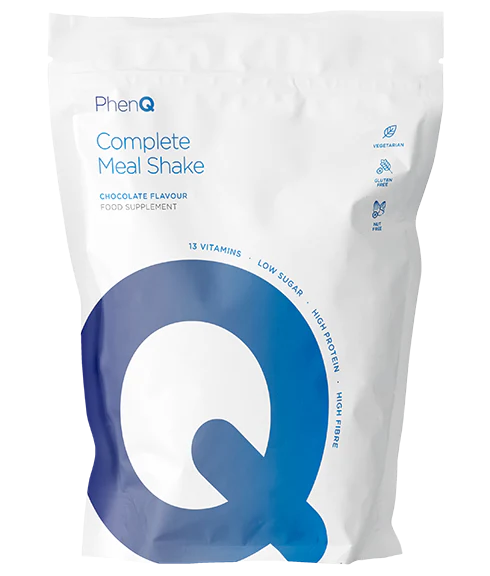
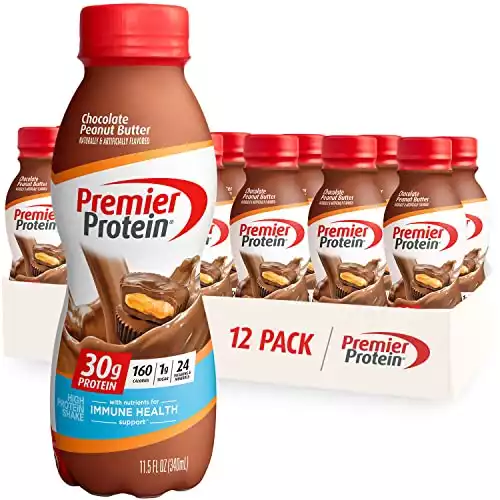
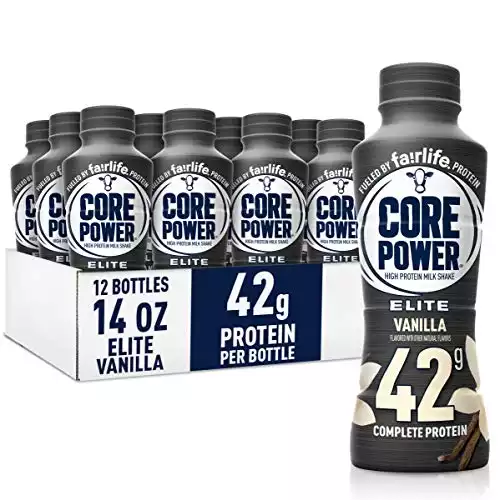


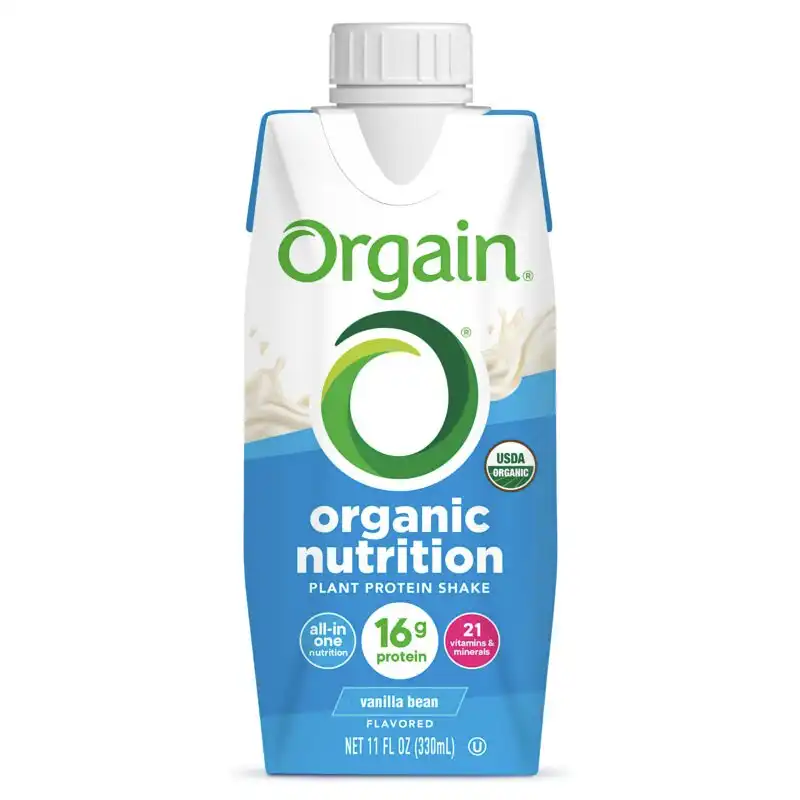

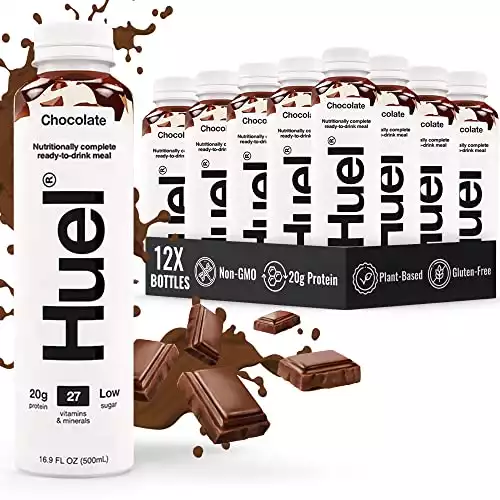
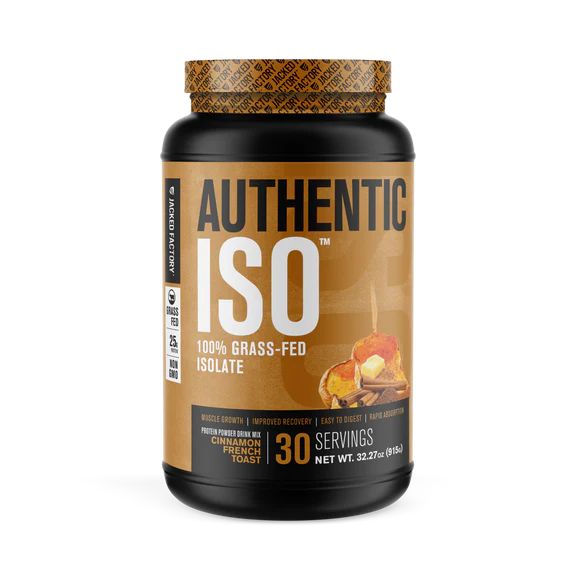
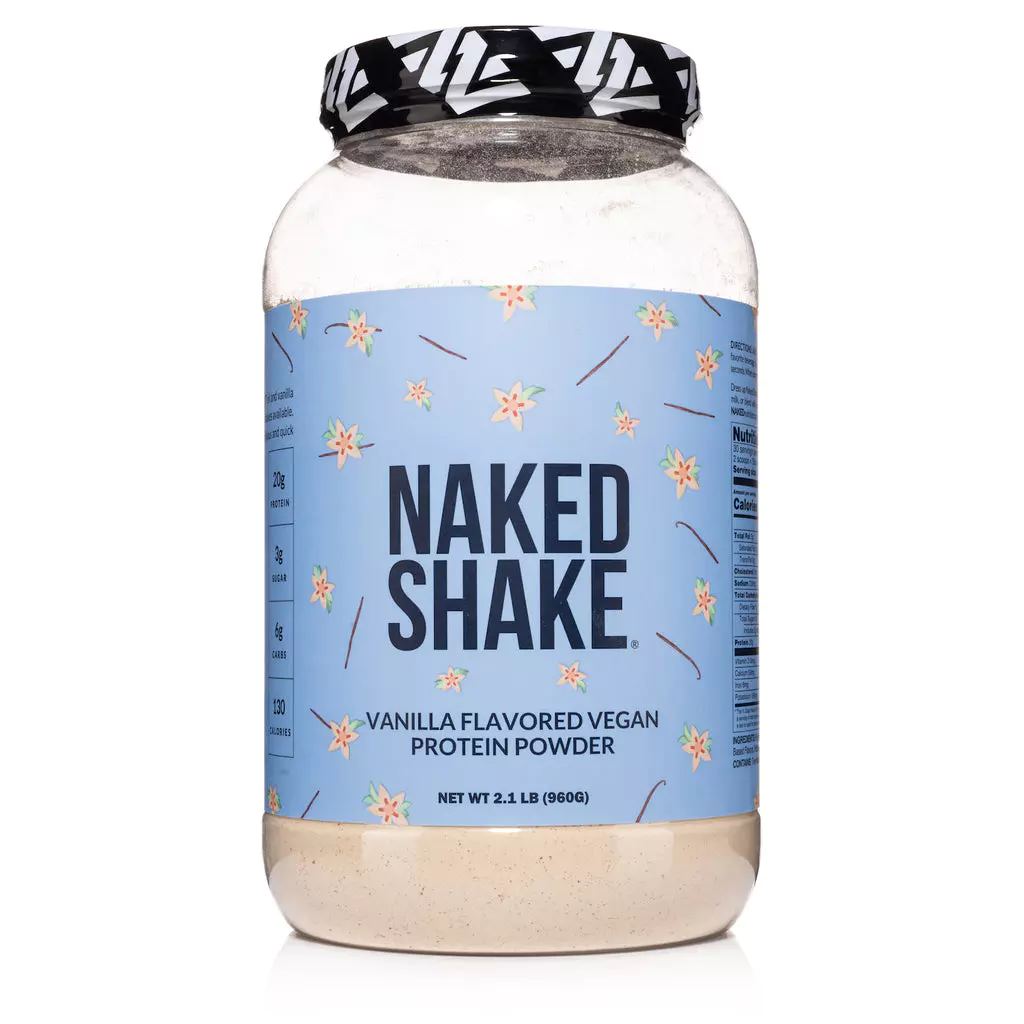
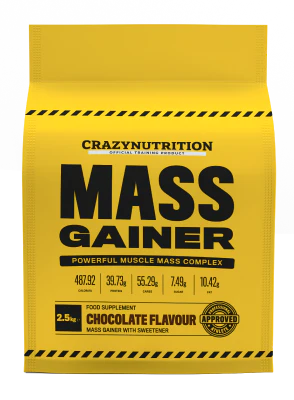
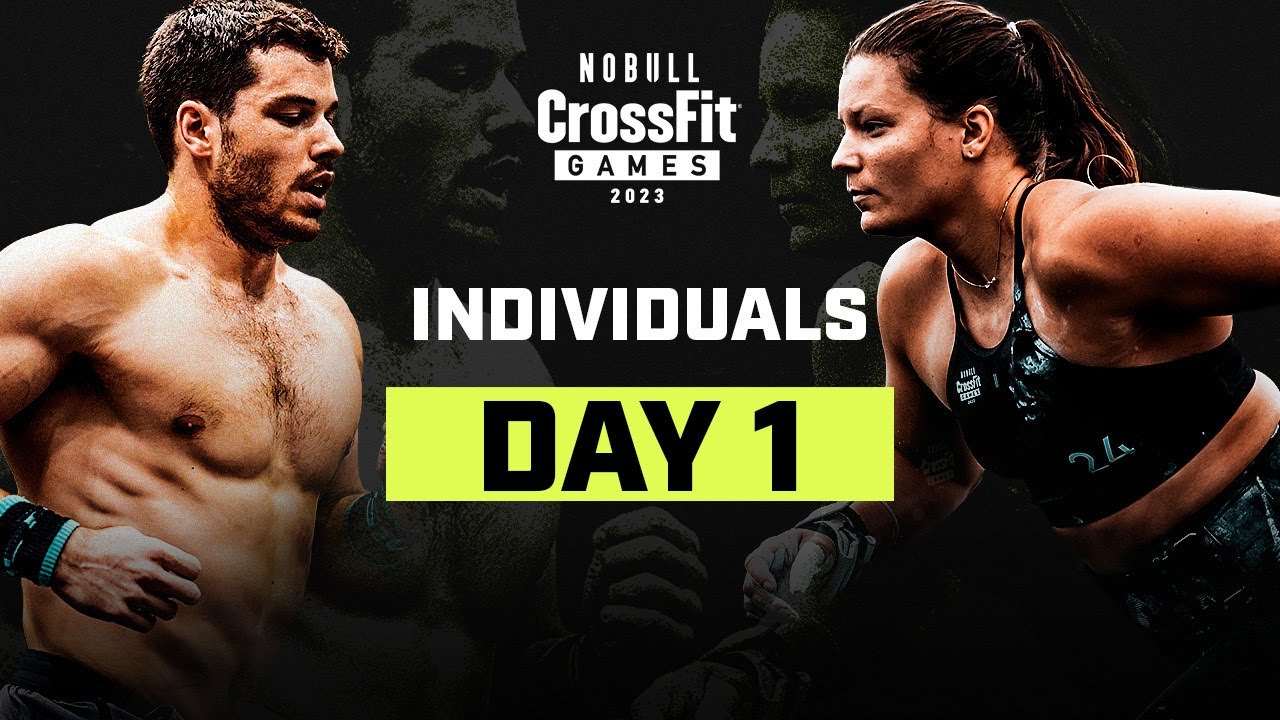

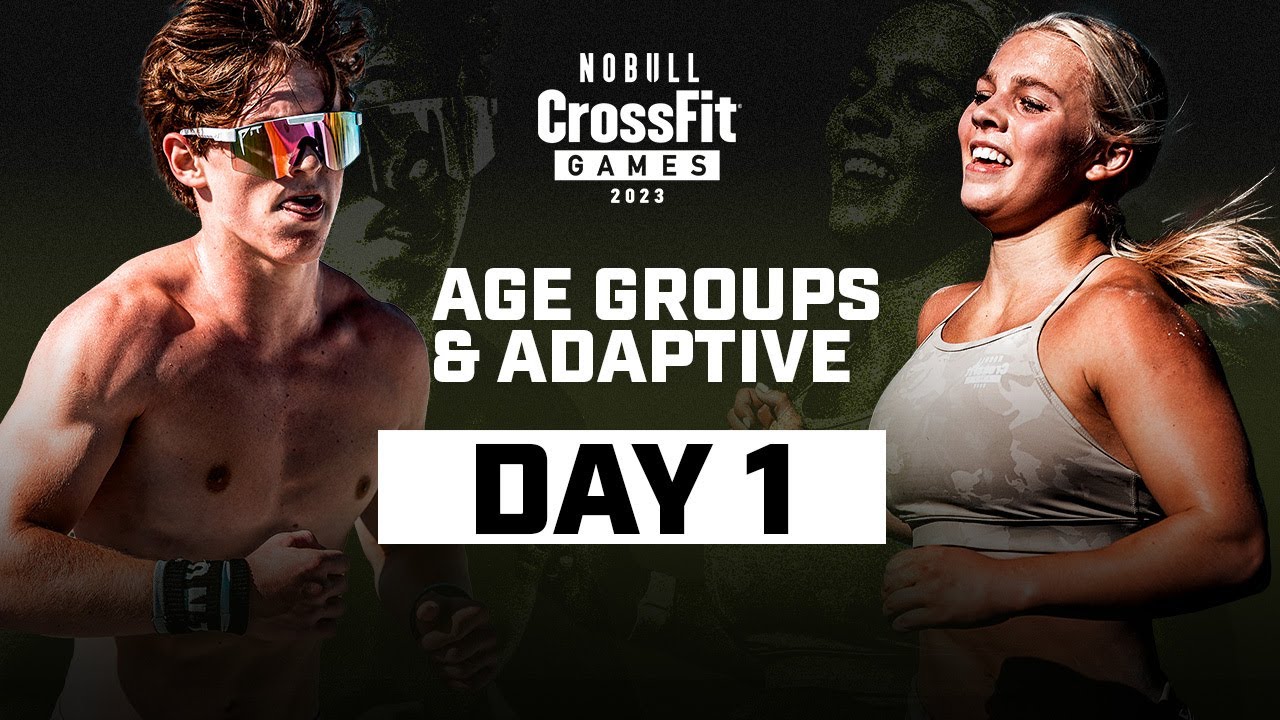
 For now classes are 6pm and 640pm at 2840 Wildwood st in the Boise Cloggers studio.
Book your class NOW!
click this ==>
For now classes are 6pm and 640pm at 2840 Wildwood st in the Boise Cloggers studio.
Book your class NOW!
click this ==>








